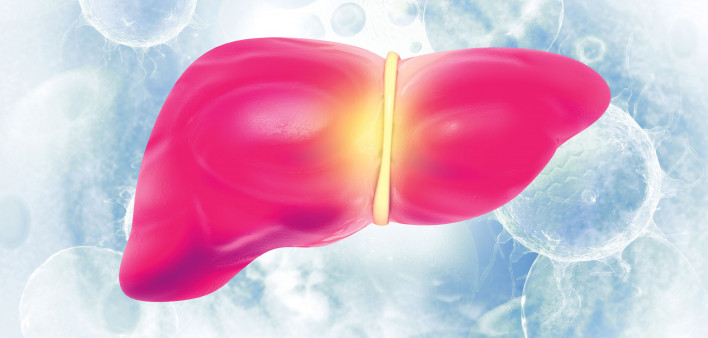Researchers have identified certain biomarkers that that are highly accurate in predicting non-alcoholic fatty liver disease (NAFLD) among people with HIV who do not have hepatitis B or C viruses (HBV or HCV), the National AIDS Treatment Advocacy Project (NATAP) reports. The researchers also found markers that are good at ruling out advanced fibrosis (scarring) of the liver.
Presenting their findings at the 10th International AIDS Society Conference on HIV Science (IAS 2019) in Mexico City, investigators at Brazil’s National Institute of Infectious Disease and the Oswaldo Cruz Foundation conducted a cross-sectional analysis of people with HIV in the PROSPEC-HIV study.
Members of the cohort selected for the analysis could not have viral hepatitis or engage in excessive alcohol use. Additionally, they had to have available data about key serologic biomarkers or have a reliable reading from a FibroScan imaging scan of the liver, also known as transient elastography.
After fasting, participants underwent a clinical evaluation, blood sample collection and a FibroScan test during a single day.
Out of 674 members of the PROSPEC-HIV trial, 437 were included in the analysis, including 38% who had NAFLD and 11% who had advanced fibrosis. The cohort had a median age of 44 years old. Fifty-seven percent of cohort members were women, 52% were Black or mixed race and 42% had a history of smoking. Ninety-six percent of the individuals were on antiretroviral treatment for HIV, 82% had a viral load below 30 and the median CD4 count was 620.
The study authors compared the noninvasive Steato-ELSA index and other tests developed to predict fatty liver disease. Such testsincorporate various combinations of health conditions, body measurements and biomarkers, including metabolic syndrome, type 2 diabetes, body mass index (BMI) and waist circumference as well as blood levels of triglycerides, insulin, glucose and the liver enzymes ALT, AST and GGT. They also compared widely used fibrosis tests that use combinations of age, health conditions, BMI, liver enzymes, platelet count and blood albumin level.
They found that Steato-ELSA could correctly identify NAFLD 81% of the time and could correctly identify the absence of the condition 74% of the time. The Fatty Liver Index was 75% and 76% accurate on each of those measures, respectively.
Three tests were also quite accurate at identifying the absence of advanced fibrosis, including the NAFLD-Fibrosis Score, the Fibrosis-4 (FIB-4) test and the Aspartate-to-Platelet Ratio Index (APRI).
The investigators suggest that health care providers should look to these tests as a part of caring for people with HIV in order to identify NAFLD and rule out advanced fibrosis.
To read the stud abstract, click here.
To read the NATAP report, click here.







Comments
Comments